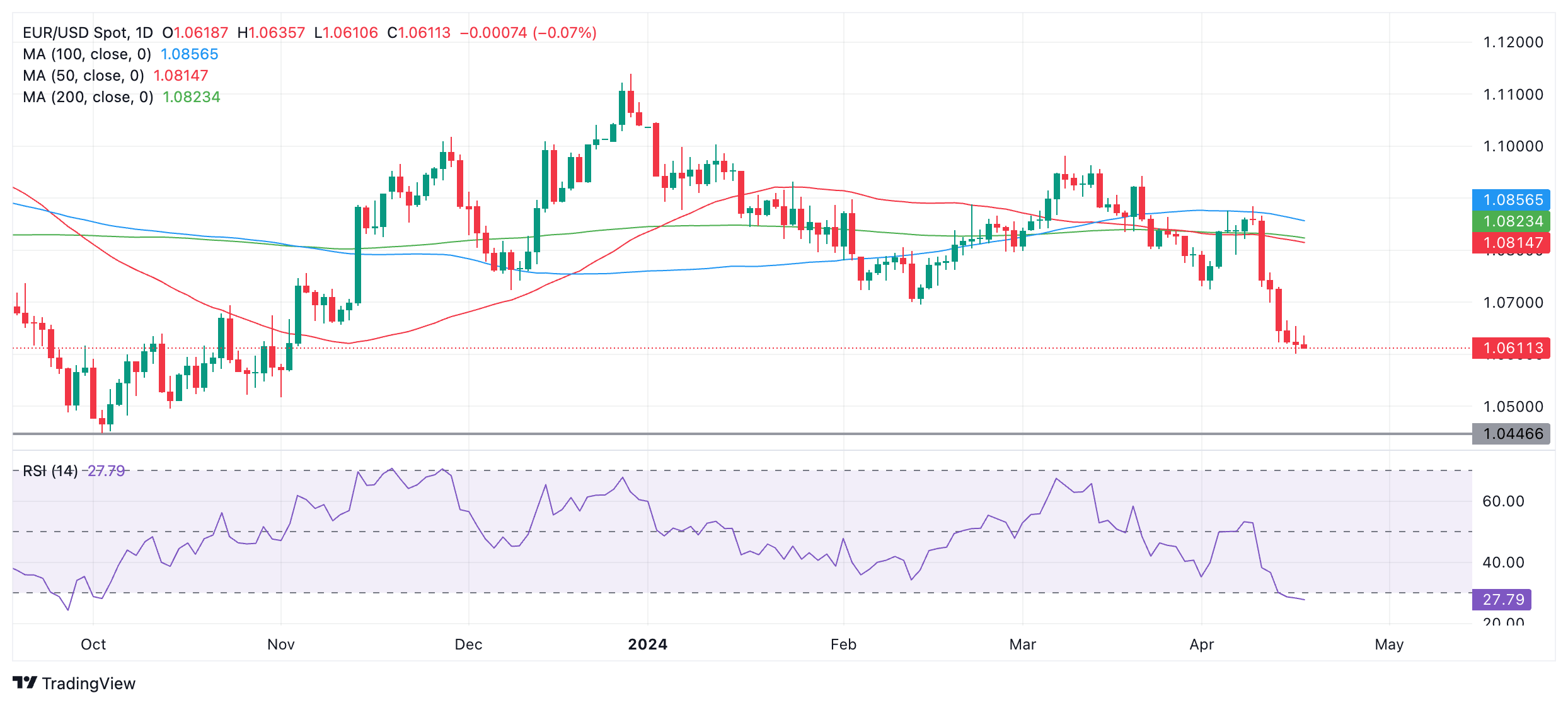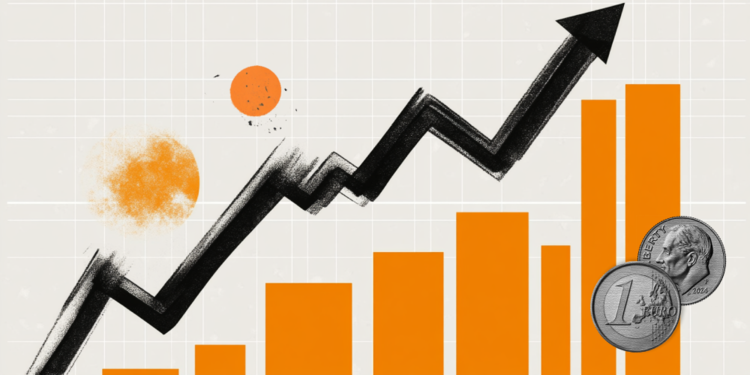- The EUR/USD recovers after the publication of the Eurozone IPCA inflation data.
- Speeches by several key members of the ECB's governing council could also affect EUR/USD.
- EUR/USD enters oversold levels on the daily chart, indicating retracement risk.
The EUR/USD rebounds about two tenths to the 1.0650 area on Wednesday after the publication of final estimates of March inflation data for the euro zone.
EUR/USD: recovers after final estimates and ECB speeches
EUR/USD rebounded on Wednesday after the final Harmonized Index of Consumer Prices (HICP) reading came in line with initial estimates at 2.4% year-on-year. This figure is lower than the 2.6% year-on-year in February.
The core IPCA showed an increase of 2.9% year-on-year, also in line with initial estimates, compared to 3.1% in February. The month-on-month figures were also in line with initial estimates.
The lack of change in the final estimate may have dispelled increasingly pessimistic expectations about interest rates. A rate cut is now expected in June, and since lower rates, or the expectation thereof, tend to reduce foreign capital inflows, this has been depreciating the Euro (EUR) and putting downward pressure on EUR/USD.
It is possible that the market expected more of the same, but in the absence of new signals from the IPCA data, it began a relief rally after hearing the news.
Speeches by key ECB members throughout the day, including ECB Executive Board member Piero Cipollone, Isabel Schnabel and President Christine Lagarde herself, could also influence the pair's volatility.
The arguments in favor of an imminent interest rate cut – the interest rate on the ECB's main refinancing operations stands at 4.50% – were reinforced on Tuesday after ECB President Christine Lagarde said that the ECB will cut rates soon, barring a surprise, and that the ECB was closely monitoring oil prices due to tensions in the Middle East.
The pair has been in the oversold zone on the charts, increasing the chances of a bullish correction on the horizon.
Technical analysis: EUR/USD is in an oversold zone
The EUR/USD pair is firmly in a downtrend on both its short and medium-term time frames, since peaking and moving to 1.1139 in December.
EUR/USD Daily Chart

The bearish thesis is supported by the fact that the pair is trading below all of its major moving averages: the 50-day, 100-day, and 200-day simple moving averages (SMA).
It is making lower lows and lower highs and this trend is likely to continue, with one caveat.
The Relative Strength Index (RSI) shows oversold on the daily chart. However, if the RSI broke out of the oversold and rose above 30 again, it would be a sign that the pair is correcting and short-term traders should close their positions and open long positions.
As things stand, it is still possible for the pair to continue declining and even if a correction occurs, the dominant downtrend is likely to resume. The next key downside target for the pair is the 2023 lows at 1.0446.
Meanwhile, if a pullback occurs, a possible target could be the swing low at 1.0700.
US Dollar FAQ
What is the US Dollar?
The United States Dollar (USD) is the official currency of the United States of America, and the “de facto” currency of a significant number of other countries where it is in circulation alongside local banknotes. According to 2022 data, it is the most traded currency in the world, with more than 88% of all global currency exchange operations, equivalent to an average of $6.6 trillion in daily transactions.
After World War II, the USD took over from the pound sterling as the world's reserve currency.
How do the decisions of the Federal Reserve affect the Dollar?
The single most important factor influencing the value of the US Dollar is monetary policy, which is determined by the Federal Reserve (Fed). The Fed has two mandates: achieve price stability (control inflation) and promote full employment. Your main tool to achieve these two objectives is to adjust interest rates.
When prices rise too quickly and inflation exceeds the 2% target set by the Fed, the Fed raises rates, which favors the price of the dollar. When Inflation falls below 2% or the unemployment rate is too high, the Fed can lower interest rates, which weighs on the Dollar.
What is Quantitative Easing and how does it influence the Dollar?
In extreme situations, the Federal Reserve can also print more dollars and enact quantitative easing (QE). QE is the process by which the Fed substantially increases the flow of credit into a clogged financial system. This is an unconventional policy measure used when credit has dried up because banks do not lend to each other (for fear of counterparty default). It is a last resort when a simple lowering of interest rates is unlikely to achieve the necessary result. It was the Fed's weapon of choice to combat the credit crunch that occurred during the Great Financial Crisis of 2008. It involves the Fed printing more dollars and using them to buy US government bonds, primarily from financial institutions. QE usually leads to a weakening of the US Dollar.
What is quantitative tightening and how does it influence the US dollar?
Quantitative tightening (QT) is the reverse process by which the Federal Reserve stops purchasing bonds from financial institutions and does not reinvest the principal of maturing portfolio securities in new purchases. It is usually positive for the US dollar.
Source: Fx Street
I am Joshua Winder, a senior-level journalist and editor at World Stock Market. I specialize in covering news related to the stock market and economic trends. With more than 8 years of experience in this field, I have become an expert in financial reporting.







